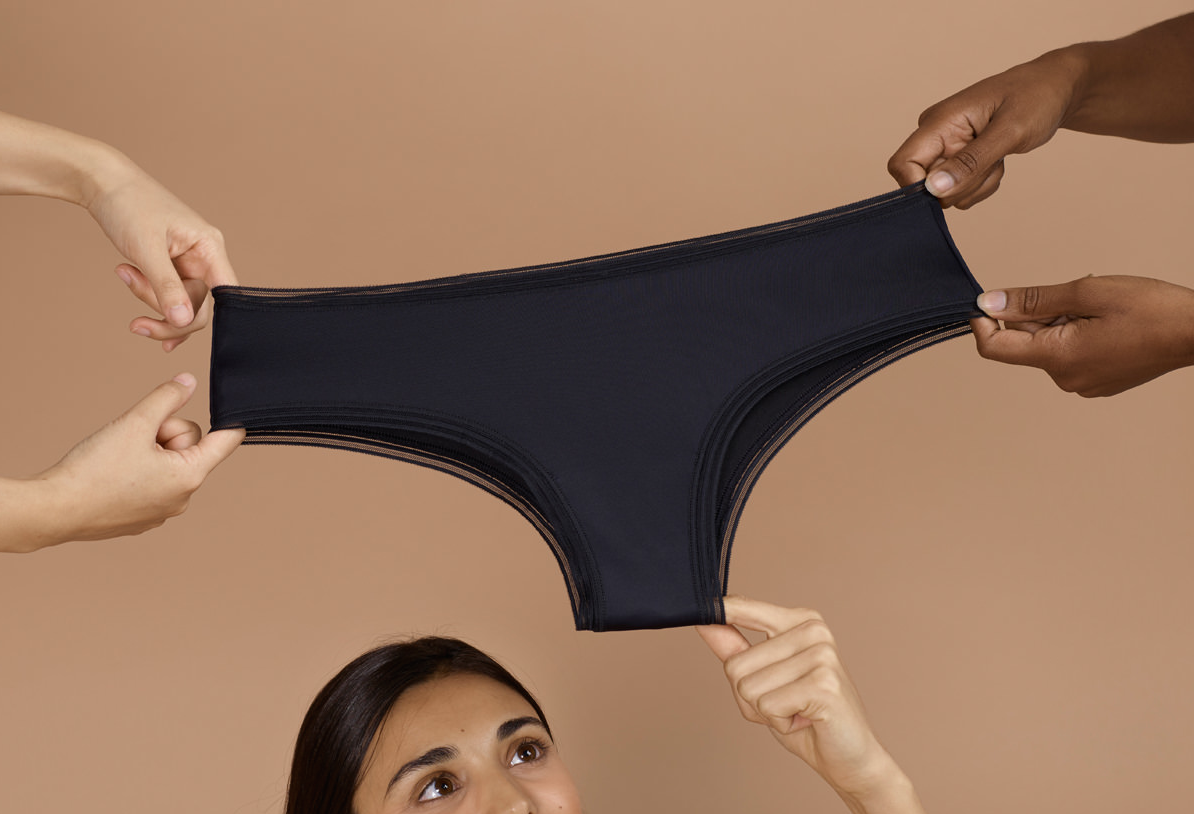Can you cut 1 Tonne of carbon pollution out of your life?
Take the challengeWe are all aware of what happens down there. Once a month your uterus goes on a relentless mission to… well, torture you so ferociously that you are certain a tiny person is inside of you stabbing your poor insides with a dull knife whilst you go on a chocolate eating rampage that would give Augustus Gloop a run for his money.
And if this isn't bad enough, most likely you are also paying unfair taxes on sanitary items that end up in an endless landfill cycle.
Let's look at the facts…
Say the average menstruation span is roughly 40 years per person (11-51). On average, a woman may use up to 20 tampons a cycle (240 tampons a year)… that's a total of 9,600 tampons in a menstrual lifecycle (of course this would vary for different women and different countries).
That is a lot of tampons being sent to landfill. In fact, 20 billion tampons and pads are being dumped into landfill each year. Conventional pads can contain the equivalent of about four plastic bags. Polyethylene plastic in pads can take hundreds of years to decompose.
Well, 1 Million Women have tested various eco-friendly alternative sanitary items and we are here to share our knowledge.
Period Undies

[Credit: THINX]
These are underwear that have been specially modified and fitted with moisture-wicking, absorbing and stain-resistant technology to look and feel like regular underwear, except provide protection for leakage.
1 Million Women tried both THINX and ModiBodi™ and found them surprisingly comfortable. There was a bit of a confrontation factor at the beginning, but for anyone that usually wears pads this shouldn't be an issue.
Every woman flows differently, however I think the main hurdle is the leakage situation. For a tampon, you are likely to leak too, but everything is compact inside. So the period undies really just take some getting used to. If you are paranoid about leakage, you can just take the same approach as you would with tampons and bring an extra pair with you when you leave the house to put your mind at ease.
Menstrual Cup

Menstrual Cups are made of medical grade silicone that you insert, go about your business, remove, wash, repeat, and avoid the environmental harm that tampons produce. The brands on the market have names like Ruby Cup, Diva Cup, Moon Cup or Juju Cup. Was this dropped out of the mystical heavens to grant a green-conscience resolution for our vaginal flows? Yes.
Also, investing in a menstrual cup will save you money in the long run. According to Switch Report,
"On average Australian women spend between A$120 and $200 each year on pads and tampons. Menstrual cups retail for between A$40 and A$60 and last for "over 5 years" according to manufactures, but in reality they have no expiry date."
So 1 Million Women tried it out and we love it!
The soft nature of the silicone means it moves with you and it feels like you are wearing nothing at all…. Nothing at all… nothing at all.

It doesn't leak, well no more than a tampon might with a heavier flow. However, you really have to see what works for you.
Taking it out is easy. It's all about the angle and the pinch. You need to pinch the bottom of the cup and then pull it out slowly at the same angle as your body so nothing spills. Sometimes there could be some spillage, however if you do it over the toilet or in the shower then there is no mess.
The menstrual cup can stay in for 8-12 hours, which means you can go to work and not worry about it all day. When you get home you can carry on with the empty, wash and rinse business.
When it is all over, give the cup a quick rinse and boil it in a pot that you have designated to your cup to sterilize it. Then store it in its bag until your next period.
1 Million Women we found that the combination of the period panties and menstrual cup for heavy flows provide full zero-waste protection.
Other alternatives
Whilst the menstrual cup and menstrual panties are the ones we tried, there are other eco-friendly alternatives to consider that we hear are great.
Organic tampons and pads
What about the chemicals used to make tampons and pads?
Dioxins (a known carcinogen), chlorines, rayon, plus the herbicides and pesticides that were used in the process of growing the cotton, are all part of the lifecycle of the tampon. Although these chemicals have been approved, as being safe in the amount used per tampon/pad, that is assessing the levels of chemicals for one item, not the 10,000 of them used during your entire lifetime. This would be equivalent to examining the health effects of smoking just one cigarette.
TOM Organic is an Australian, female-owned business that makes certified organic tampons and pads, developed by women for women. Sourced from Certified organic Cotton, all the packaging is recyclable or FSC certified and they only use soy-based inks when printing.
Menstrual sponges
These are absorbent sponges that go inside your vagina just as a tampon would. Researchers say that a sponge can last up to six months if properly looked after. These are biodegradable and sustainably harvested from the ocean floor. Don't be discouraged by their past life under the sea, they are thoroughly cleaned and safe. From my research, they are apparently the softest tampons you will ever use, read here to learn more about them.
Reusable pads
Reusable pads are exactly how they sound, soft cloth pads that are a washable and reusable alternative to disposable menstrual items. They are worn just as a normal pad would be worn, and they come in many shapes and sizes. You can find an Australian option on the Cloth Pad Shop.
The red coats are coming!
For a lot of women around the world the lack of access to sanitary items makes this time of month dreaded. Women who are homeless or living in developing nations do not always have access to sanitary items. In developing nations, girls are skipping school and even dropping out because of lack of access to items or places to change.
If these women and girls could have access to a reusable item such as a menstrual cup that will last them 10 years or period panties that are easily washable, then this could massively reduce the amount of girls being held back because of their periods.
So there you have it. Periods are messy. However, they are a symbol of our womanhood and that is beautiful. So whatever sanitary solution you choose to surf your crimson wave, it may take some getting used to. It's all a trial and error process.
[Header Image: Shutterstock]
We're in a climate emergency and it's going to take all of us to get out of it. That's why 1 Million Women is building a global community of women committed to fighting climate change with our daily actions. To join the (free) movement just click the button below!

